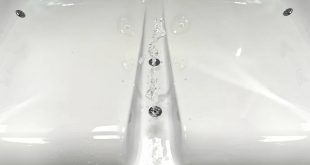Troops were told chemical alarms that went off at U.S. bases in Saudi Arabia during the Gulf War were false alarms, but a new study indicates that sarin gas traveled hundreds of miles.
WASHINGTON — U.S. bombings of Iraqi munitions factories in January 1991 released a plume of sarin gas that traveled more than 300 miles to affect American troops in Saudi Arabia, although military officials claimed at the time that chemical alarms triggered by the gas were false, a study released today shows.
The Jan. 18, 1991, bombings of the munitions plants in Nasiriyah and Khamisiya blew a plume of sarin gas high above a layer of cold, still air — also called the boundary level — and into a swift wind stream that carried the gas to Saudi Arabia, said the study conducted by researchers Robert Haley and James Tuite and published in the journal Neuroepidemiology.
Study: Wind blew deadly gas to U.S. troops in Gulf War
The gas plumes, the researchers said, can be blamed for symptoms of Gulf War illness, the mysterious ailment that has affected more than 250,000 veterans of the war.
The gas set off repeated chemical weapons alarms at U.S. troop points in Saudi Arabia, the report said, but commanders said they were false alarms, because if the troops had been hit with sarin gas, there would have been casualties. There were no casualties, although U.S., Czech and French systems all detected traces of sarin and mustard agent.
 News Chicago Business, Info & Events
News Chicago Business, Info & Events







